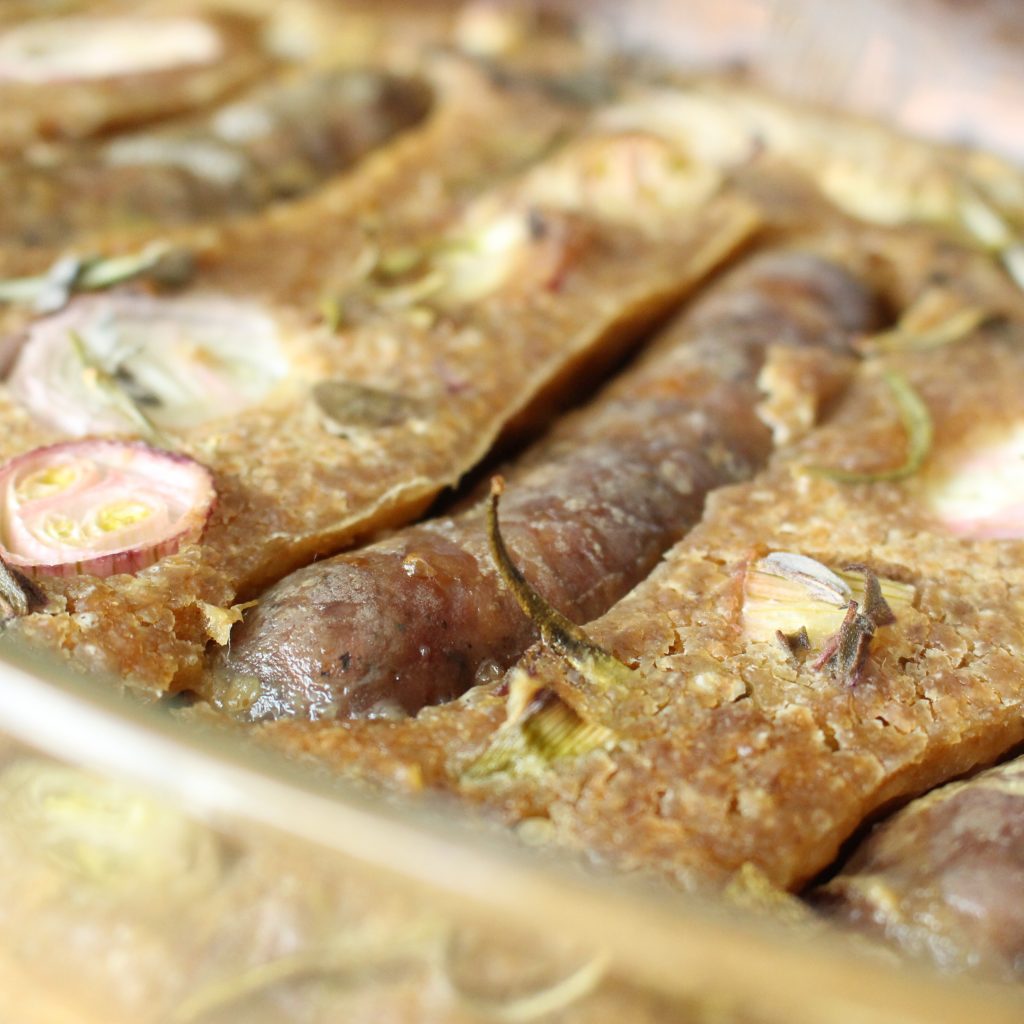
Toad-in-the-Hole is an English dish that combines the gloriousness that is sausages with the deliciousness of a crispy, bready surrounding. It is filling and comforting. I love it.
Traditionally, it is made with a white flour batter. Being a Toad-in-the-Hole lover AND an ancestral cook, I couldn’t wait to get my hands on this dish and transform it into a meal that works ancestrally. I’ve using soaked, sprouted and fermented whole grains to make a nutritionally-dense and easily-digestible, ancestral Toad-in-the-Hole. The bready part is a little denser than traditional batter, but it’s really moreish like that!
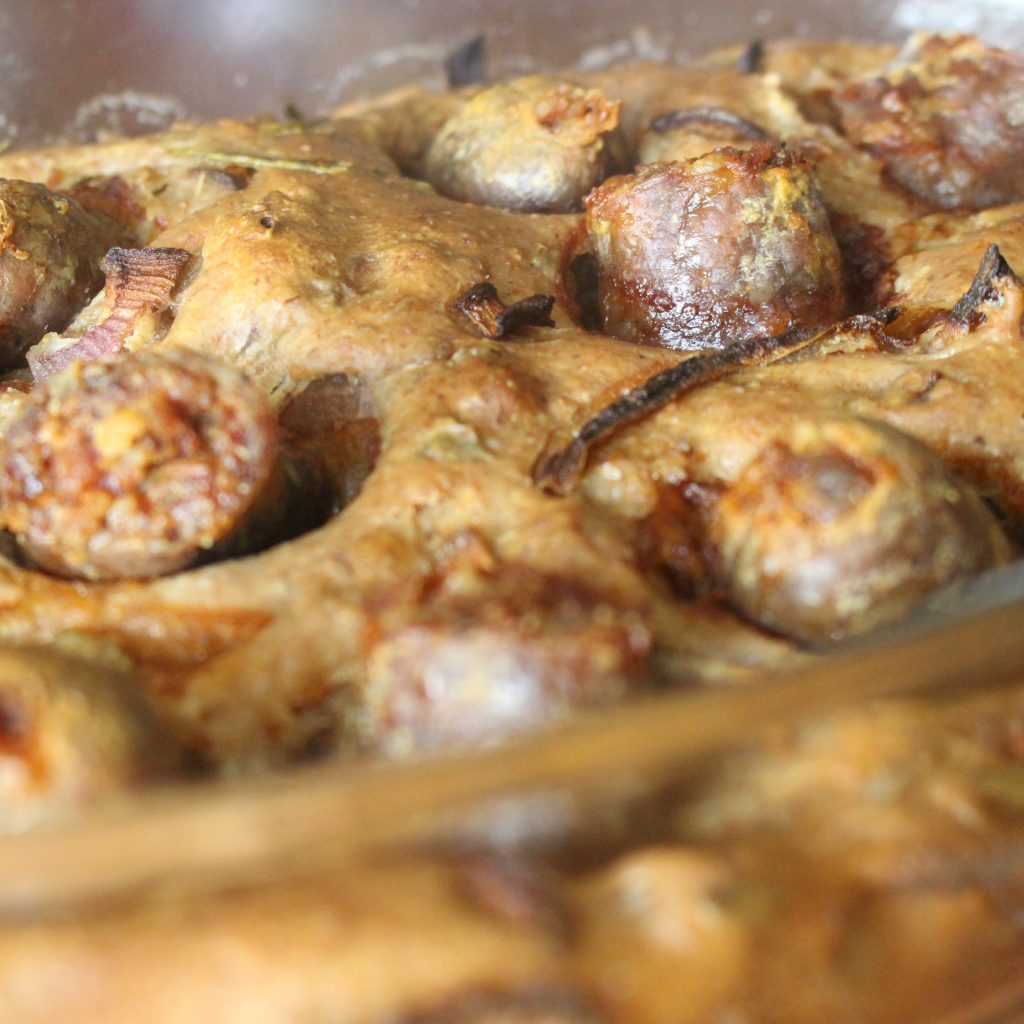
I’m excited about how easy it is to make this dish a homage my local producers. In my own kitchen I use grains grown and milled in Tuscany and sausages made by local farmers. Doing so fills me with joy.
As always, though, this month’s Ancestral Cook-Up is all about taking a recipe and making it work for you. With that in mind, the only pre-requisites for this dish are grains and sausages. We all have different sources, tastes and supplies – take my template and make it work for you, your family and your kitchen.
Ancestral Cook-Up is a monthly virtual cook-along. It works like this:
- Check out the template recipe
- Adapt it to suit your kitchen
- Cook it some time this month
- Share what you’ve done

Ingredients:
These quanities fit my oval dish that is 6cm deep, 30cm long and 20cm wide. It feeds 4 people if served with a salad or green vegetables.
300g wholegrains
4 sausages
optional: fermentation starter (for example discard, milk kefir or yogurt)
optional: extras such as onion, herbs and spice, cheese
Let’s look at each of these ingredients:
Wholegrains
Why whole grains?
Whole grains are a healthier choice than the traditional white flour. They are whole – the bran of the grain is intact, which means more vitamins and minerals. In addition, the grains haven’t yet been ground into flour. Once the components of a grain are exposed to the air they start to degrade. Flour that has been sitting on a shelf doesn’t have the nutritional benefits of a grain that’s had all its goodies lock-up safely for you since harvesting!
In addition, by using whole grains we get an opportunity to soak and sprout them. Soaking deactivates the nutrient-blocking phytic acid that grains carry and sprouting increases the vitamin and mineral content.
Use grains that you like. You could use whole wheat or any of it’s ‘ancient’ varieties, including einkorn, emmer or spelt. Buckwheat groats work really well and are a gluten-free option. I’ve used all of these with success.
Then there are others: barley, rye, sorghum, teff…the list goes on – you could try using these on their own, or mix them in with some wheat and/or buckwheat.
I love making this with whole grains, but if you don’t have these, you could also use flour to make the batter. You won’t be able to sprout it, but you can ferment it as you would whole grains.
Sausages
Sausage-making is an artform. Sausages made by a farmer using his own produce are, in my opinion, worth their weight in gold – for the taste, for the community, for the land, for the animals and for the environment. I love to honour them in this dish.
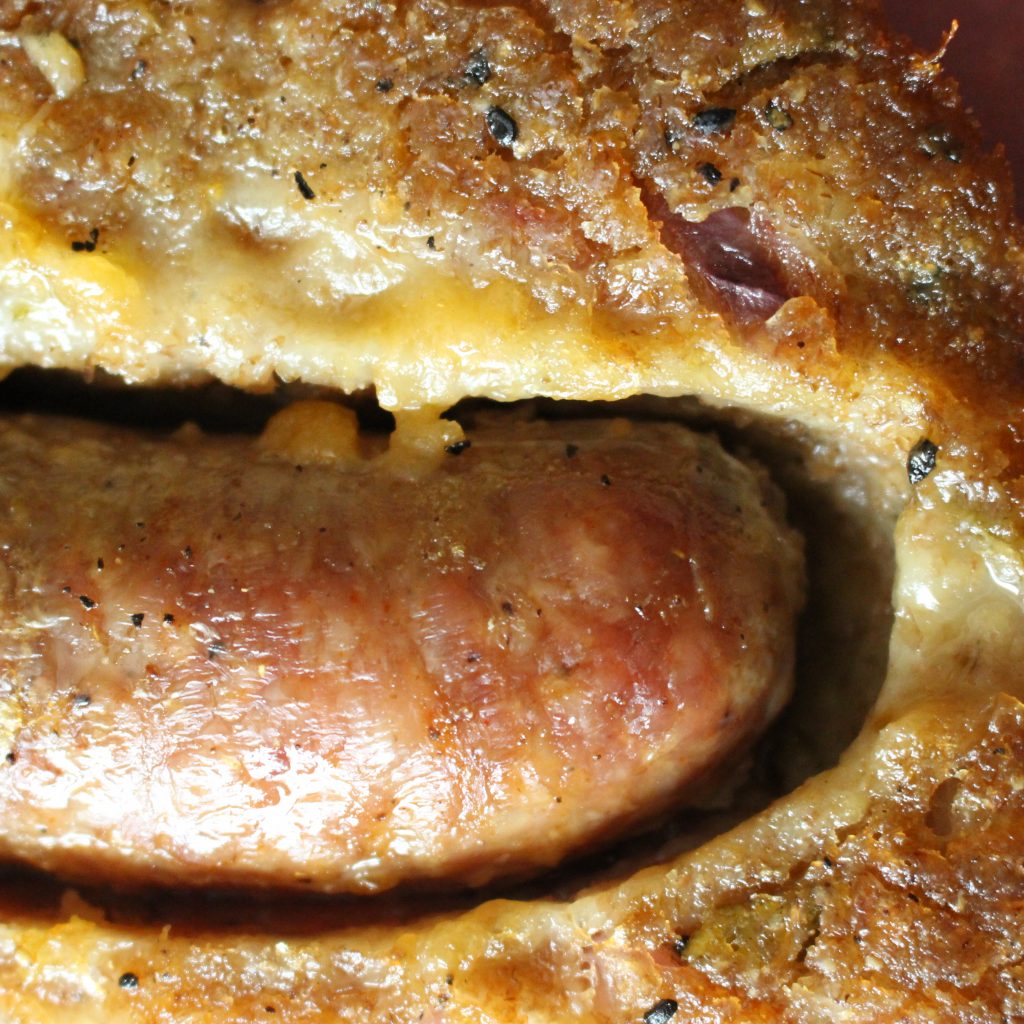
Check the label – look for sausages without chemical additives and be careful with added bread if you’re looking to be gluten-free.
The process:
The method for making this Sourdough Wholegrain Toad-in-the-Hole is not time-consuming, but it does take time.
Here’s how the process works:
Day 1 – soak your whole grains
Day 2 – sprout your whole grains
Day 3 – blend your whole grains
Day 4 – cook and eat the dish (horrah!)
So, if you want to have Toad-in-the-Hole on Saturday for lunch you should soak your grains on Wednesday evening.
Let’s fill in the details:
Day 1 – Soak your whole grains by putting them in a bowl with ample water. Add a tsp of sourdough starter, kefir, whey or other acidic medium to help the phytic acid neutralising process. Leave this to sit, covered lightly, for 24 hours.

Day 2 – Drain and rinse your whole grains well and put them back, drained, into a clean bowl. Let them sit, covered lightly, for 24 hours, until you can see sprouts. This can sometimes take longer, if so, make sure you rise and drain them daily.
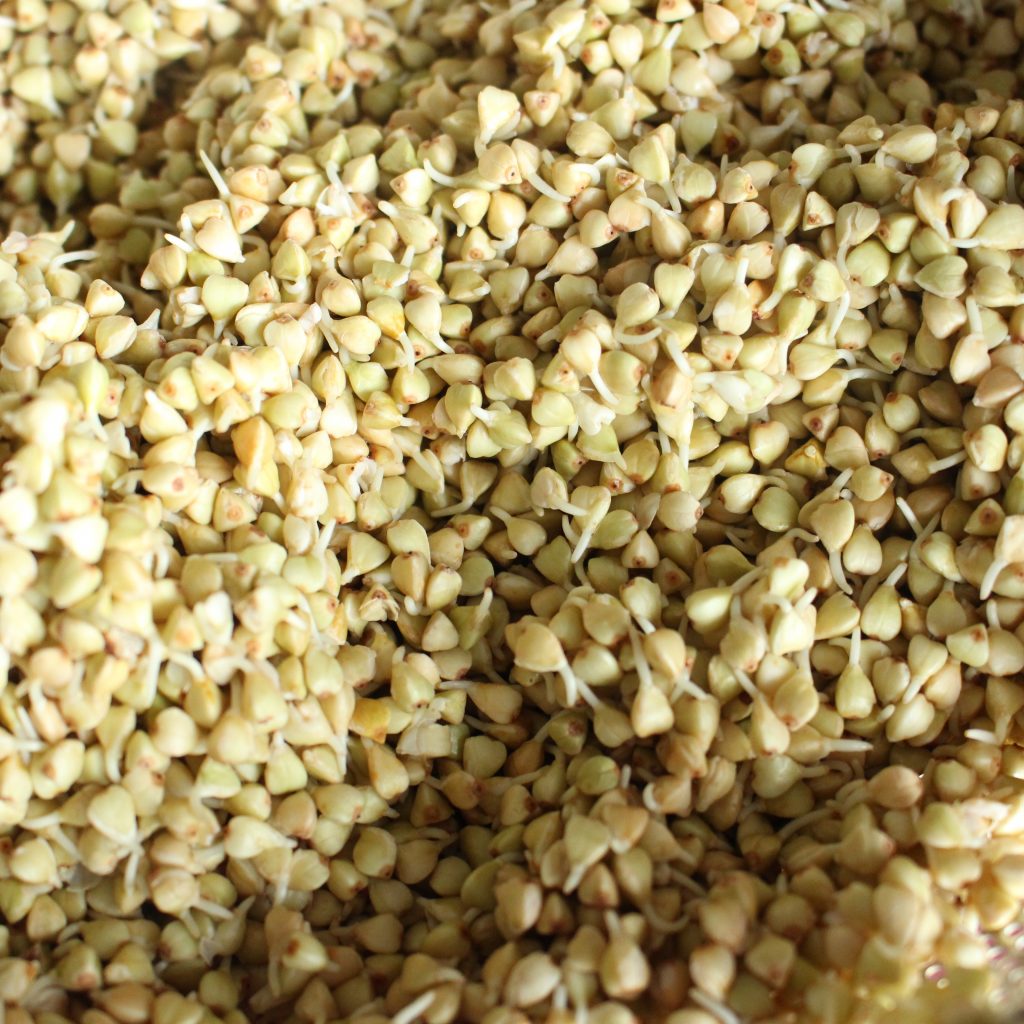
Day 3 – Rinse your whole grains well and blend them into a batter with water and, optionally, a tsp of starter (this can be sourdough starter discard, milk kefir, yogurt or sauerkraut juice). Do not make this batter too runny – it’ll cook better if it’s relatively thick. Cover this lightly and leave it to sit at room temperature. The length of this ferment is up to you – when my ambient temperature is around 20C/68F, I’ll usually wait 24 hours, but if the weather is hotter, I’ll often cook the dish earlier or put the batter in the fridge to slow down the fermentation. It won’t do any harm if the batter is a little over-fermented, it’ll just be more sour. Think about how you like your sourdough to taste.
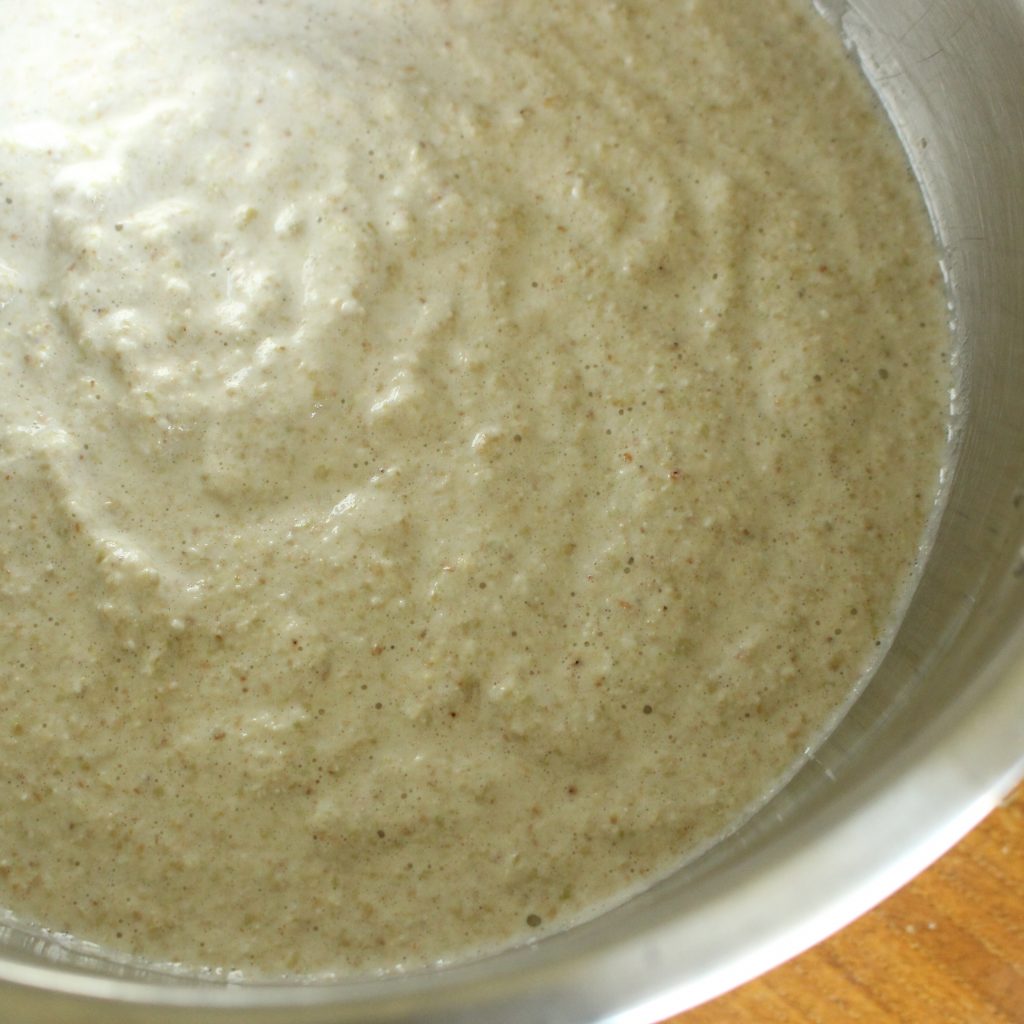
Preheat your oven to 180C/350F
Grease your dish well, using a layer of greased baking paper if you are worried about it sticking.
Stir your fermented wholegrain batter well and add extras, like chopped onion, garlic, herbs and spices.
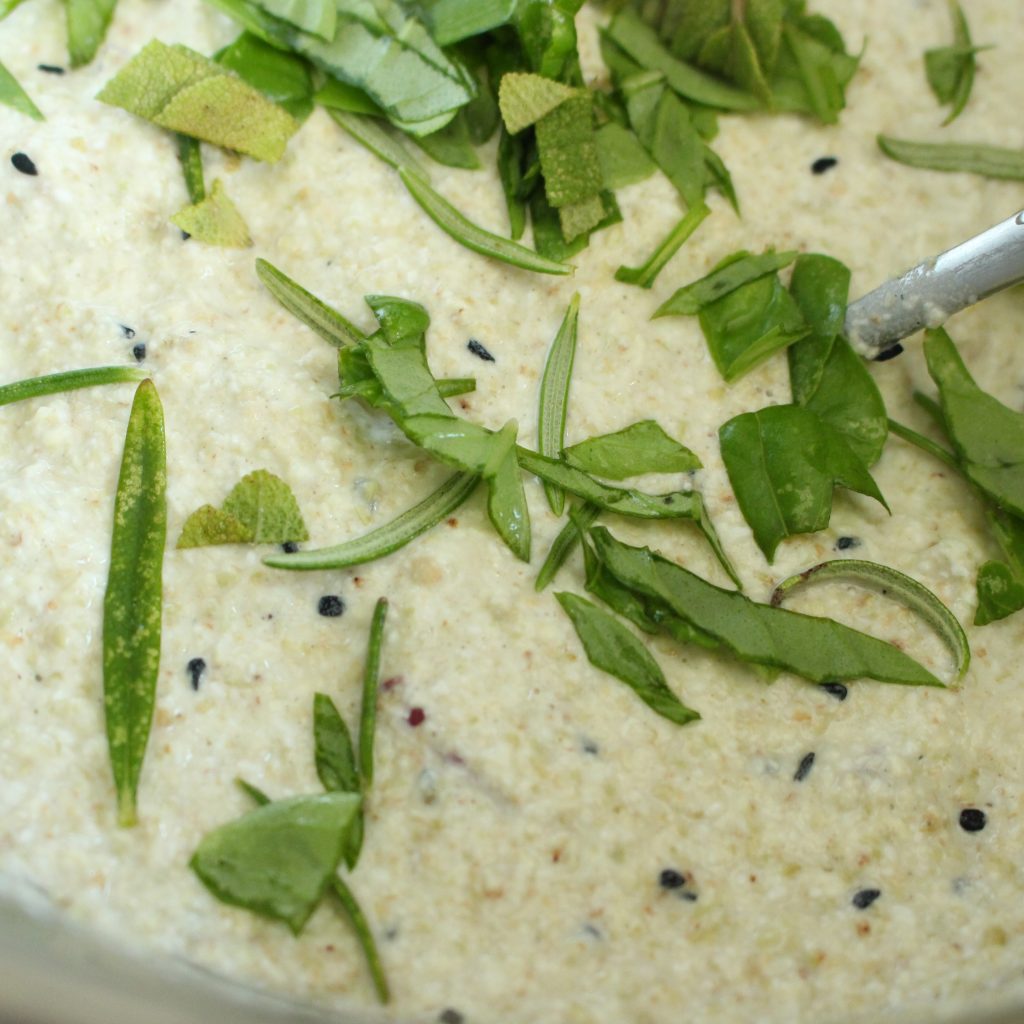
Assemble the dish by placing the sausages in the bottom (chopped or whole), then pouring the batter around them, until they are 80% covered.
Add any finishing touches, like a sprinkle of herbs/cheese/a drizzle of olive oil to the top of the dish.
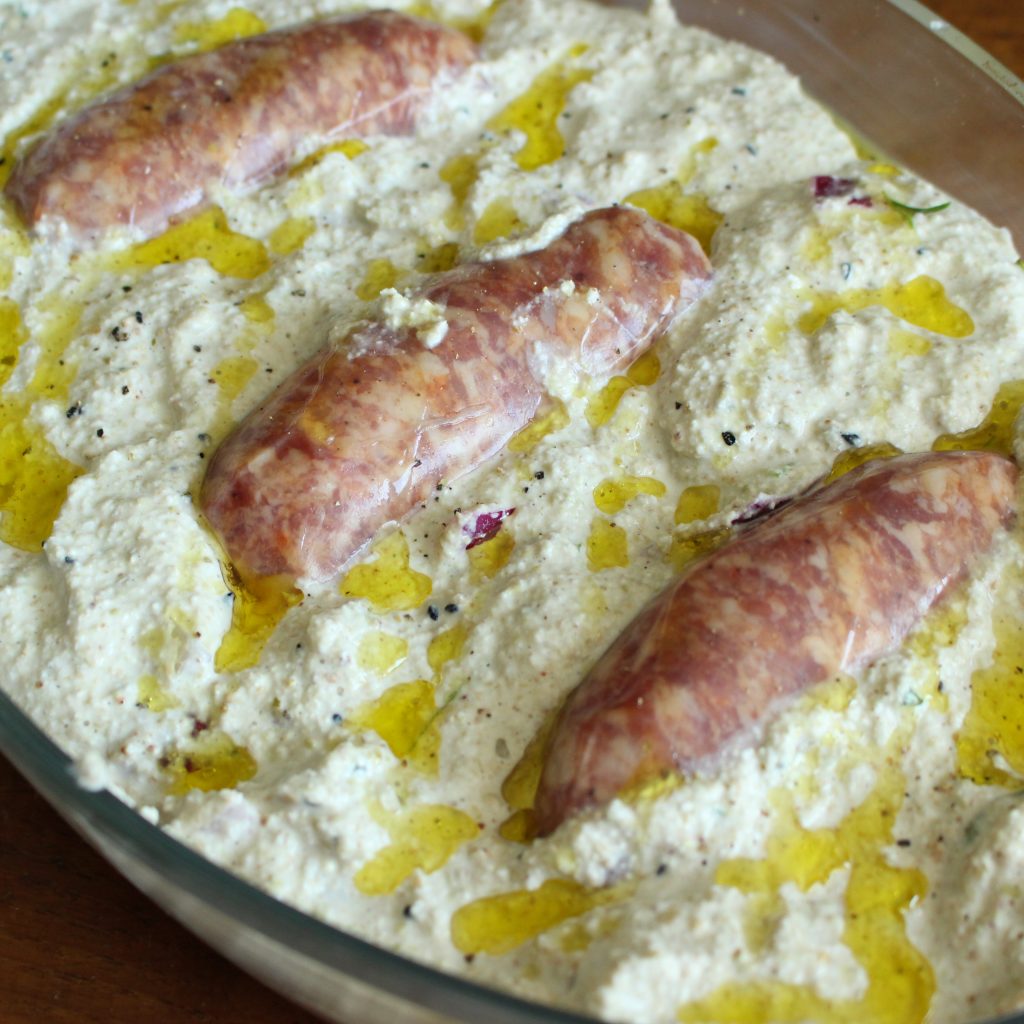
Bake for around 40/45 minutes, checking after 30 and turning down the oven if the crust seems brown enough. It will be done when it’s golden/crusty, bubbly and the batter part feels sturdy to the touch.
Sharing it:

I want to see and hear about your process: your ingredients and why you chose them, how you’re cooking them, the finished bread, how you eat it and who you share it with. I’ll be posting pictures on Instagram @ancestral_kitchen and on my blog. If you’re on instagram, post using the hashtag #ancestralcookup and tag me (@ancestral_kitchen). If you don’t have instagram, please do comment at the bottom of my blog post – you can upload your pictures there too.
If you want to give it a go, I thank you. I’ve been looking for a community of cooks for a while. At the moment that seems harder than nomal. If you can help make it more than just me in my kitchen, you get a big heap of my gratitude.


Bring ancient grain baking into your kitchen!
Download my free 30-page guide with five healthy and tasty 100% ancient grains recipes.

